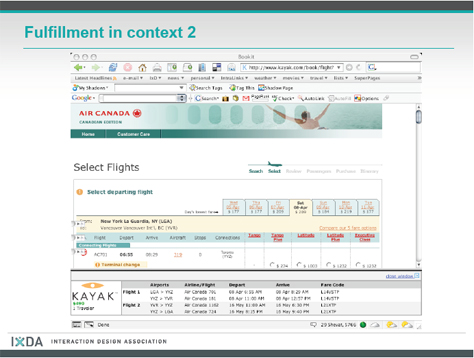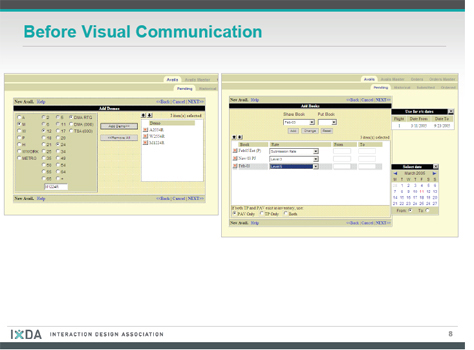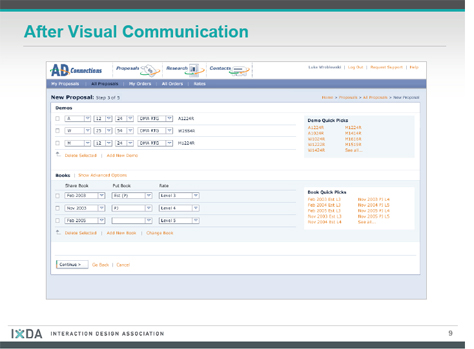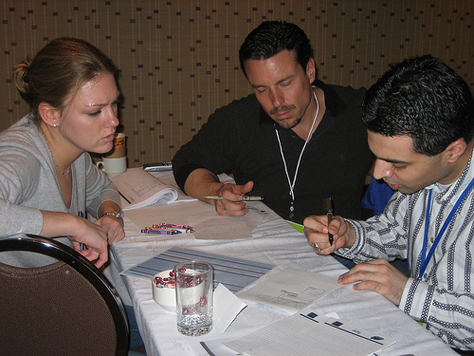Dave Heller began by describing the difference between interaction design (IxD) and interface design as structure versus presentation. For example, a designer can present a single selection (interaction design) as a radio button or a combo box (interface design). He went on to say that, in general, people have to find something, interact with it, then transact. He also gave many examples of both good and bad interaction design, as shown in Figure 1, and most interesting to me, argued that there is no difference between Web design and software design, just a difference in context. (I disagree!)

Kim Goodwin’s presentation was very practical and applicable. She went into detail about the roles on a Cooper design team and Cooper’s goal-directed design process, which consists of a research phase, user modeling, requirements definition, framework definition, design, and development. The key point is to focus on goals rather than tasks, because ultimately, users perform tasks to achieve certain goals. Kim also offered many pearls of wisdom, including the following:
- Ignore detail in the beginning of the design process.
- Personas are based on behavioral data only. Don’t think about what users are likely to do; think about what you know they will do.
- Design is not an engineering problem.
- In persona development, there is a huge problem with self-reported behavior.
- Usability is a form of QA.
- There were many more, but I’ll stop there.



